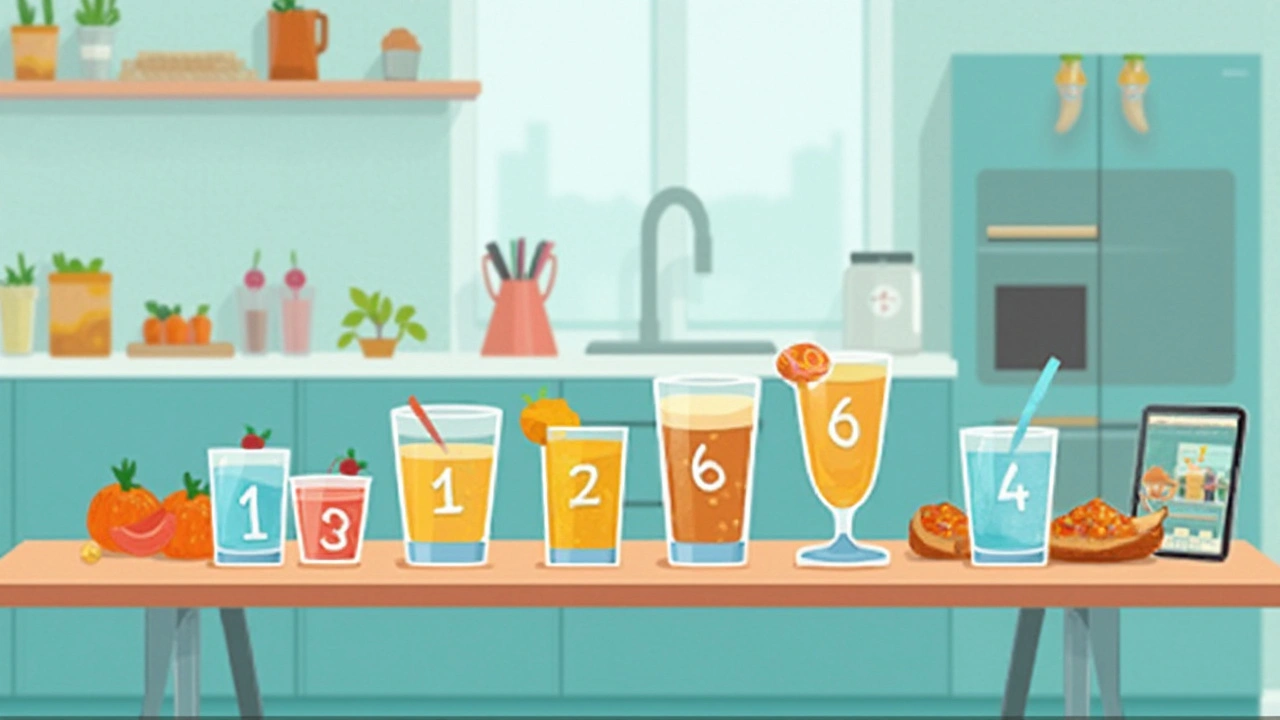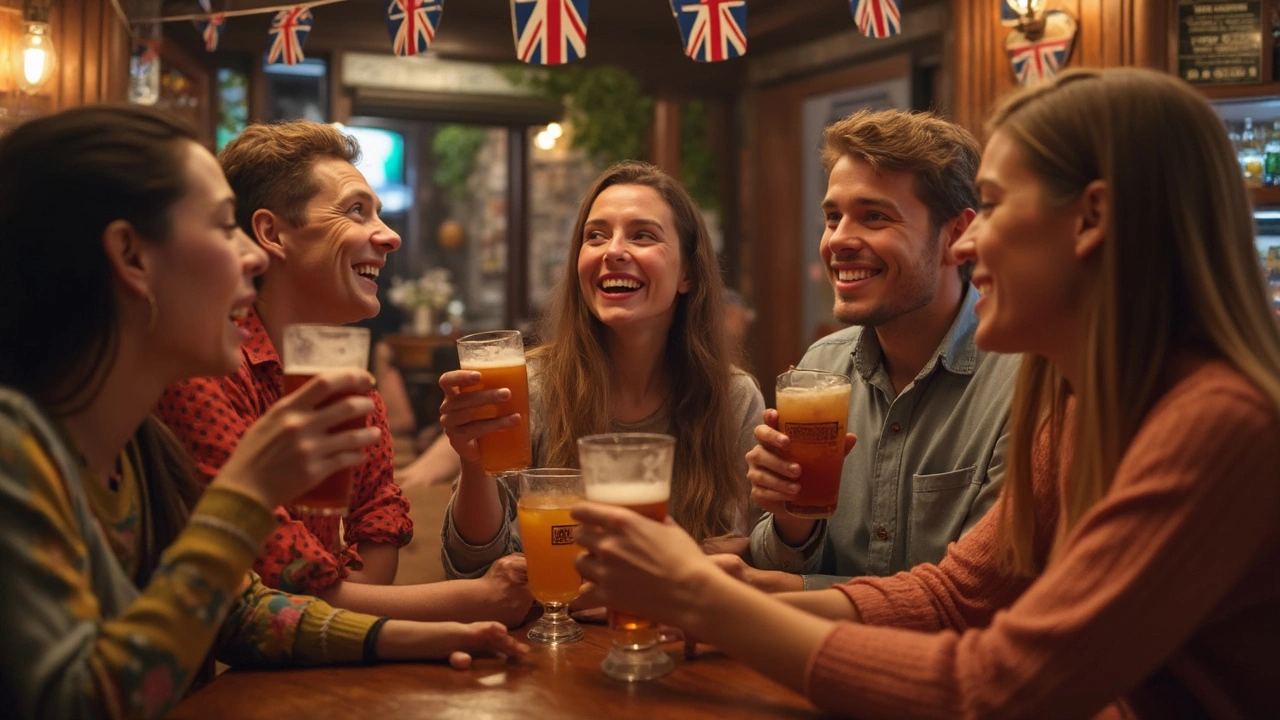If you've been to any party, college gathering, or even chatted casually about drinking, chances are you've heard someone mention the "6 drink rule." It's this mysterious guideline that seems to float around brunches, barbecues, and lectures about responsible alcohol use. But here's a wild fact—most people using the term can't actually tell you where the rule comes from, what it truly means, or whether it holds any actual weight for your health. Is it about safety? Reputation? Just another bit of adulting we all pretend to understand? Let’s cut through the noise and figure out what the 6 drink rule really means for you and whether it can actually help you enjoy a night out without turning it into a next-morning disaster.
What Exactly Is the 6 Drink Rule?
The "6 drink rule" isn't written in stone by any health board, but you’ll hear about it everywhere from college orientation to the kind of boss who hosts team happy hours. The idea is straightforward—set a limit of no more than six standard drinks in one sitting to avoid everything from bad decisions to alcohol poisoning. But why six? The number isn't random: Most countries—including the U.S., UK, and Australia—draw a line between "low-risk" and "binge" drinking, and it often lands around four for women, and five for men. Six usually marks the tipping point between just feeling buzzed and entering the danger zone where your judgment goes out the window and your body starts to pay the price.
It’s important to know what a standard drink actually is. The CDC defines it as 12 ounces of regular beer, 5 ounces of wine, or 1.5 ounces of distilled spirits like vodka or whiskey. Most people pour heavier at home or in bars, so one cocktail or home-pour usually packs more than one standard drink. If you’re tallying up to six, it’s shockingly easy to hit that without realizing it. According to a recent Johns Hopkins study, over 70% of people underestimate their intake at social events because glasses are larger and top-ups are common.
The 6 drink rule is designed to keep you out of the ER, out of trouble with the law, and—let’s be real—out of embarrassing situations that will haunt your group chat forever. But it’s not just about reputation. The rule acts as a checkpoint for your brain and your liver before things go off the rails. And while some people see it as a buzzkill, others swear by it for keeping the party fun and drama-free.
Why Six Drinks? Where Does the Rule Come From?
You’d think the 6 drink rule came from a giant list of peer-reviewed research, but it’s more like a rough patchwork from medical advice, government guidelines, and real experiences. In Australia, for example, the National Health and Medical Research Council calls anything over four standard drinks in one session as high-risk. In the U.S., the CDC calls binge drinking five or more drinks for men and four or more for women (in about 2 hours). So why did six become the magic number for the popular rule?
It’s partly social. Six drinks is right at the edge before “binge” switches on for men, but it’s well above the line for most women. This means that for a lot of mixed-gender friend groups, six became the agreed universal "no more." In reality, women metabolize alcohol differently—one study from the NIH found that, on average, a woman’s blood alcohol concentration (BAC) climbs 20% higher than a man’s after the same number of drinks, even accounting for differences in body weight. That means, for some, six drinks can mean blackout territory.
The six drink limit also works as a social intervention: by drawing a clear line, groups can watch out for each other. Many college campuses use the rule as a talking point in alcohol education. The thinking is, if someone says, "I’m at five," everyone’s on board with helping that person pace themselves. It makes it more normal to count and talk about your drinks, rather than just letting the night spiral. Some folks even mark their hand with Sharpie at parties, like tally marks. (Messy but effective, at least until you wash your hands, or someone draws a mustache on you instead.)
But don’t mistake this six drink marker for a perfect safety net. It’s not a magic shield. Your body, your mood, your medication, your food intake—all of it changes how alcohol hits you. But at its core, the six drink rule is a practical, easy-to-remember guidepost that has just enough backing from science and social wisdom to actually work when used with common sense.

How the Body Handles Alcohol: What Six Drinks Actually Do
Here’s where the rubber meets the road—what exactly happens to your body as you inch up to six drinks, and then sail past it? Your liver can only break down about one standard drink every hour. Start to stack those up and you get ahead of what your liver can handle, meaning alcohol pours into your bloodstream faster than your body can process it. That’s when you start to feel loose, then goofy, and finally more than a little out of control.
At six drinks, the average adult’s blood alcohol level will land somewhere in the 0.1-0.15% range. If you’re 150 pounds (about 68 kg), six drinks in three hours will put you right in that pocket. That BAC range is pretty significant: vision blurs, motor skills tank, and risk of injury—slips, falls, unwise romantic moves—skyrockets. The National Institute on Alcohol Abuse and Alcoholism found that 6+ drinks quickly leads to risky behavior: the odds of accident or emergency hospital visits take off after four, and double again at six.
Your immune system takes a hit too. After a heavy night, your body’s white blood cells don’t show up as quickly to fight off infections. This is why you can catch a cold or feel a nasty hangover after a birthday or wedding binge. And then, there’s memory. Blackouts—a period where you’re awake but can’t remember key details later—don’t wait until you’re "passing out." They can start as low as BAC 0.08% (so much less than six drinks for many people), and are even more common when alcohol is consumed quickly.
If you’re taking medication, or just sleep-deprived, six drinks can hit way harder. Your liver is already busy, so it can’t finish both jobs at once. There’s also genetic differences—some folks process alcohol much slower due to enzyme variations, meaning even three drinks feels like a bender to their system. This part is impossible to eyeball, so don’t think the six drink rule works the same for everyone every time.
Tips to Stick to the 6 Drink Rule and Drink Responsibly
Let’s get practical. Half the challenge is remembering to even count, especially when you’re surrounded by toasts, shots, and heavy pours. Here’s how to keep on track:
- Plan ahead: Figure out how many drinks you plan to have before you show up. Tell a friend your number so you’re accountable.
- Pace yourself: Space it out. One drink per hour is a safe sweet spot. If you finish way too fast, try alternating each drink with a glass of water. Your future self will thank you.
- Order wisely: Go for lighter options. Sessions beers, spritzes, and low-ABV cocktails are game changers for sticking under your limit. Mocktails work wonders for socializing minus the buzz.
- Keep an eye on measurements: Standard drinks are smaller than most bar pours. Ask for a single, and avoid drinks with multiple shots unless you can keep count.
- Eat something: Food slows absorption, so snack or start your night with a meal. High-protein foods are especially good at keeping you on the level.
- Tally up: Use an app or the notes app on your phone. Or literally draw tallies on your wrist. I know people who swap their hair tie from wrist to wrist with each drink—whatever works.
- Buddy system: Have a friend keep count with you. You can remind each other, share snack breaks, and have a built-in exit buddy if things get too wild.
- Skip the round game: Rounds often mean drinks come faster than you want and you lose track. Get your own and sip at your pace.
Pro tip: If you hit your limit early, don’t panic. Order soda water with lime or a mocktail—it looks the part and keeps the awkward questions away. And if someone is pushing you, a quick, “I’m pacing myself, big plans tomorrow,” is usually enough to stop the pressure. The most responsible drinkers I know don’t draw a ton of attention to it; they just look more relaxed and feel better the next day.

Should You Use the 6 Drink Rule? When It Works and When It Doesn’t
So, after breaking down all the facts, when should you actually use the six drink rule? It’s definitely a better guide than tossing the idea of moderation out the window. For social gatherings, birthdays, or those times when you’re around people you trust, it keeps things on track without having to constantly nag yourself about every sip.
But, it isn’t one-size-fits-all. If you’re smaller-bodied, have certain health conditions, or take meds, fewer drinks might be safest. According to the World Health Organization, no amount of alcohol is totally harmless, and every person’s tolerance changes across their lifetime. At the same time, rigid rules can backfire if they spark guilt or make you hide what you’re drinking. Thinking of it as a helpful guardrail, rather than a strict law, works best for most people.
My own friends are a mixed bag: some always cap at three drinks—never more. For others, especially at weddings or festivals, we’ll agree to take breaks and check in after every round. Someone always drives or we grab a cab. With family, I go even slower. Once, Eamon and I made an actual calendar of dry days—turns out, you remember way more from vacations when you’re not chasing away hangovers every morning.
The six drink rule can lower your chance of mistakes, accidents, or rough next-day regrets, but only if you pay attention to your own body. Listen for early warning signs like feeling dizzy, anxious, too sleepy, or more argumentative than usual. These are clues your body gives way before you cross the six-drink line.
If you ever find yourself regularly needing to use the six drink rule to stay “in control,” or using it to justify risky drinking, it might be time to rethink your relationship with alcohol. No rule is a substitute for real self-awareness, and if you ever feel stuck, reaching out to someone you trust or a professional can make a huge difference. At the end of the day, the best nights are the ones you actually remember—and the worst hangovers rarely feel worth it, no matter what number you stop at.
